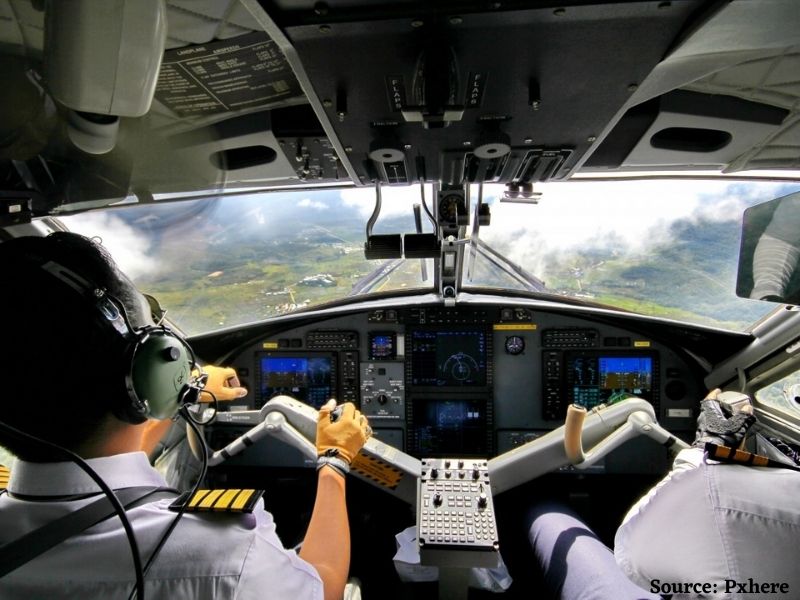According to Indian aviation experts, there’s a requirement of 10,000 commercial pilots per year against the current supply of 8,000, of whom 1,100 are women – Paromita Sengupta
Since then, air routes have multiplied and the demand for trained pilots in the domestic aviation industry has risen exponentially. According to Indian aviation experts, there’s a requirement of 10,000 trained pilots per year against the current supply of 8,000, of whom 1,100 are women. Consequently, commercial aviation is a lucrative and much sought after career option for youth, especially those with a penchant for flying and travel.
Flying clubs (i.e, schools) provide practical training for aspiring commercial pilots who are obliged to obtain a commercial pilot’s licence (CPL) awarded to those who acquire stipulated experience of flying a wide range of aircraft as also of flying solo, cross country, night flying and a minimum number of take-offs and landings etc.
India is currently facing an acute shortage of pilots because of its limited number of flying clubs (31 cf. USA’s 2,000) authorised to issue private pilot’s licences (PPLs) to trainee-aspirants. This has compelled domestic airlines to employ foreign pilots. Foreign licence holders are allowed to fly Indian skies after clearing a written exam conducted by the Director General of Civil Aviation (DGCA).
Study programmes
The minimum eligibility for youth aspiring to qualify as commercial pilots is completion of Plus Two with physics and maths. There is no upper age limit to apply for a licence which are of three genres. A PPL allows you to fly two-four passenger small civilian aircraft; a commercial pilot’s licence allows you to fly small aircraft as well as co-pilot a passenger jet and an airline transport pilot’s licence (ATPL) qualifies you to fly all genres of aircraft. Training for a CPL/ATPL could cost between Rs.30-40 lakh.
Eligible youth (with PPL) aspiring to work with reputed airlines are required to apply for a CPL after clocking 250 hours of flying (which takes 12-18 months) in a flying club approved by DGCA. In addition, they need to clear aviation subject exams and undergo medical examination also conducted by DGCA.
Former Air Force pilots are also required to apply for civil aviation licences (see dgca.nic.in) which requires them to clear written aviation subject exams, an interview and few hours of flying in DGCA-approved flying clubs, before being licensed to fly passenger jets.
Pay & progression
A co-pilot of an airline company can expect a monthly salary package of Rs.2-3 lakh while a captain draws between Rs.6-10 lakh. Additionally, captains can work overtime to draw an additional 30 percent of their salary. Moreover, they enjoy 5 star comfort for overnight stays, all expenses paid. For those working for international carriers, pay is sky-high.
Professional profile
“Job opportunities for pilots in India are in abundance with new airlines taking to the skies every year and air routes multiplying by the dozen. In my five years in civil aviation, the number of commercial aircraft in the sky has increased five-fold. Given the current pilot shortage, this is the best time for Indian youth interested in flying to up-skill. With recent advances in technology, contemporary passenger jets are fully programmed to fly by themselves. This has reduced the in-flight stress load of commercial pilots,” says former Indian Air Force (IAF) fighter pilot and currently Kolkata-based Capt. Manas Chatterjee who pilots Boeing 737 airliners of a popular private airline company six days per week to domestic and foreign destinations.
A Vishisht Seva Medal awardee who prides himself on participating in several Republic Day fly-pasts, Chatterjee began his career in 1984 as a pilot in the Indian Air Force. In 2012, he opted for premature retirement after serving the IAF for 28 years.
According to Chatterjee, skilling to qualify as a pilot does require big time investment, but the civil aviation industry helps you recover the amount and more. “Commercial aviation is a demanding career. A shot of discipline, complete involvement, long hours of work and a passion for flying are necessary requisites. As long as you remain fit and clear periodic medical examinations, you can carry on flying until age 65 and enjoy this handsome perks-and-privileges job. For me, this is the world’s best profession!” he enthuses.
